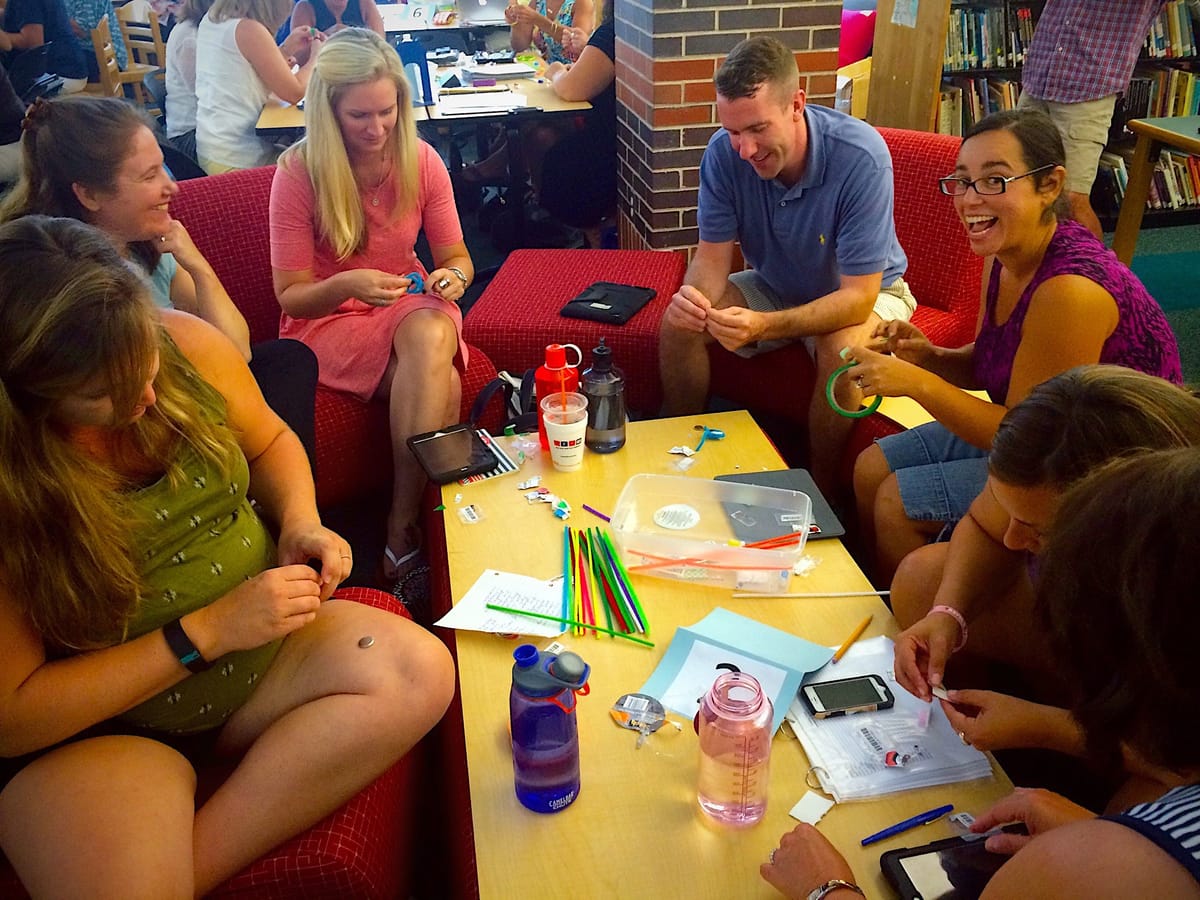Cultural Perspectives: Communities Practicing Shared Apprenticeship

During the first year of our eFormation initiative in the Center for the Ministry of Teaching, Lisa Kimball and I decided to spread the word of what we were up to by presenting at the Religious Education Association conference. I asked her what I should be reading to prepare to draft our paper, and she handed me some books and articles by Jean Lave and Etienne Wenger.
The first of those books was SITUATED LEARNING. Here's a summary right out of notes I would write preparing for certification exams years later:
Lave and Wenger had been studying apprenticeship learning (itself a very powerful idea with deep roots in the Christian tradition of spiritual formation). They eventually realized something even more interesting was happening in the situated contexts of their ethnographic studies. Those studies helped them get their heads around "how learning can occur without teaching and without formally organized apprenticeship" (p. 83).
Wenger would go on to further elaborate this work in COMMUNITIES OF PRACTICE. Here are some excerpts from Lisa's and my eFormation paper (in 2013!) that should give you a functional sense of the elements (domain, community, practice) at work in the theory:
The domain of our work is most broadly Christians engaging in the “new public square,” the online information ecosystem that serves as an increasingly significant mediator of our shared cultural experience. This domain of practices, while ubiquitous, is particularly anxiety-producing for many faith leaders, especially demographically (technology is intimidating for many in the aging leadership of religious institutions) and theologically (in part due to the presumed impersonal nature of online communication in a community that values relationship, incarnation, sacraments, etc.). Our goal is to create an environment conducive to transformational learning, such that individuals who initially view this domain as a missional distraction or intimidating quagmire come to recognize it as a creative and increasingly important venue for faith expression and leadership ...
We are working with three somewhat distinct communities, ranging from entirely external (to our institution) to entirely internal. The external community is an informal, self-identified network of alumni and professional colleagues in the Christian education field ... The internal community is a growing number of seminary students, faculty, and staff who recognize the need for new media skill development as a matter of basic cultural competency for ministry or for some more specialized application in their fields of interest. The third community blends the other two and adds additional constituencies. It is our annual e-Formation Conference, an international gathering for judicatory and congregational educators, church communicators, and other faith leaders exploring new models, tools, and skills for faith formation in a connected, digital age.
With all of these communities, our practice is to model a cycle of connection-action-reflection: (1) We convene individuals around an identified purpose (e.g., congregational “faith at home” initiatives, young adult program development, using technology for faith formation, social justice advocacy, etc.), providing initial resources to stimulate a research-based approach to project learning. (2) We support those individuals as they curate and develop new resources and implement action plans in particular ministry contexts. (3) We maintain an ecology of support and feedback emphasizing continuous experimentation, assessment, and mutual support. Through this pattern of action research, we build functional cells within the community—sustainable partnerships and networks that will continue this action/reflection method in ongoing, digitally mediated contexts.
And thank goodness we did. I firmly believe the work of eFormation and other communities like it turbocharged faith communities' responses to digital and social change and disruption, most especially the Covid-19 pandemic.
Anyway, the reason I classify this literature and approach as cultural rather than social is illustrated by a commonality among many would-be communities of practice that experience a "failure to launch."
Too often, we identify a domain of action where shared training and endeavor would be useful and begin to connect individuals in a community of interaction and some sense of shared identity. But what is often missing in these communities is a shared culture, a distinct way of collaborating, a common practice that gives structure, motivation, repeatability and resources, and a sense of collective progress to the group.
The progress piece feels especially important. In my opinion, what differentiates a community of practice from a highly pragmatic professional support group is a sense of building a library, an accepted set of moves that reflects the wisdom of the group, a collective and emergent—you guessed it—playbook.
It's great to not feel alone and to be able to ping experienced folks for troubleshooting or Q&A. But cultural theorists point out that practices are designed precisely to help the culture endure. If you can consult and question and edit and expand the playbook, you enrich your personal practice and help each willing member of the collective carry the shared practice forward.
This is why thinking of religion itself as a kind of community of practice is highly productive. And it's why a lot of would-be professional communities of practice fail to meet their full potential.
How do we formalize, ritualize, schematize, or otherwise enshrine practices of faith, and practices of faith leadership? There are a gazillion ways.
And we almost always benefit when we take the time to share and refine them together.
Image by diane horvath via Flickr (CC BY-SA 2.0 DEED)


